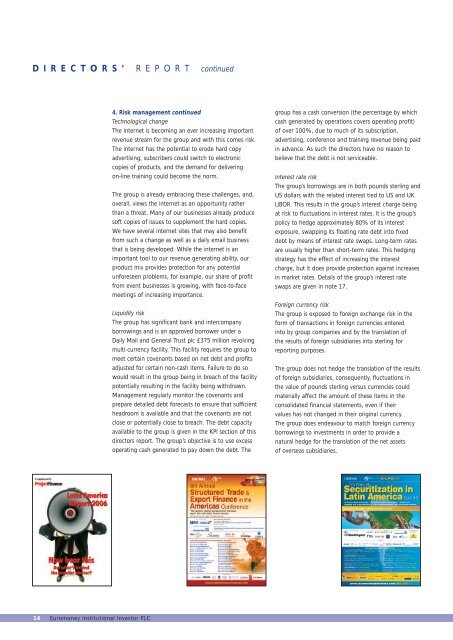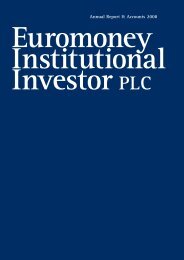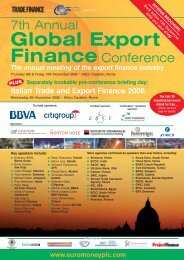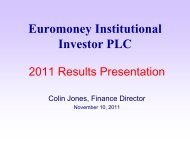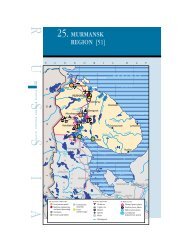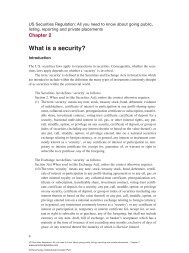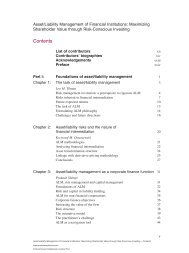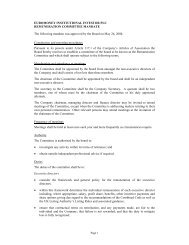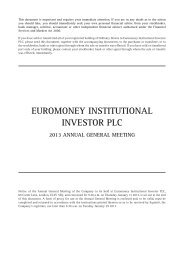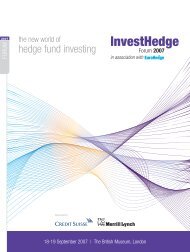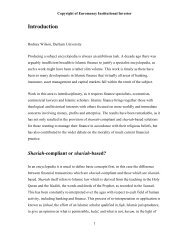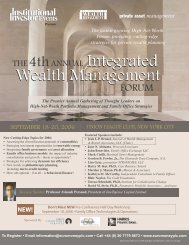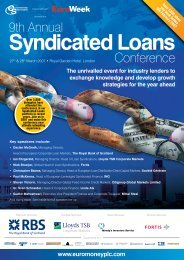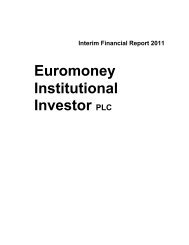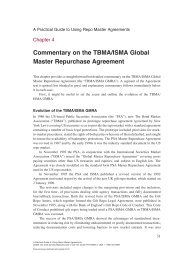Annual Report & Accounts 2006 - Euromoney Institutional Investor ...
Annual Report & Accounts 2006 - Euromoney Institutional Investor ...
Annual Report & Accounts 2006 - Euromoney Institutional Investor ...
Create successful ePaper yourself
Turn your PDF publications into a flip-book with our unique Google optimized e-Paper software.
DIRECTORS’REPORT continued4. Risk management continuedTechnological changeThe internet is becoming an ever increasing importantrevenue stream for the group and with this comes risk.The internet has the potential to erode hard copyadvertising, subscribers could switch to electroniccopies of products, and the demand for deliveringon-line training could become the norm.The group is already embracing these challenges, and,overall, views the internet as an opportunity ratherthan a threat. Many of our businesses already producesoft copies of issues to supplement the hard copies.We have several internet sites that may also benefitfrom such a change as well as a daily email businessthat is being developed. While the internet is animportant tool to our revenue generating ability, ourproduct mix provides protection for any potentialunforeseen problems, for example, our share of profitfrom event businesses is growing, with face-to-facemeetings of increasing importance.Liquidity riskThe group has significant bank and intercompanyborrowings and is an approved borrower under aDaily Mail and General Trust plc £375 million revolvingmulti-currency facility. This facility requires the group tomeet certain covenants based on net debt and profitsadjusted for certain non-cash items. Failure to do sowould result in the group being in breach of the facilitypotentially resulting in the facility being withdrawn.Management regularly monitor the covenants andprepare detailed debt forecasts to ensure that sufficientheadroom is available and that the covenants are notclose or potentially close to breach. The debt capacityavailable to the group is given in the KPI section of thisdirectors report. The group’s objective is to use excessoperating cash generated to pay down the debt. Thegroup has a cash conversion (the percentage by whichcash generated by operations covers operating profit)of over 100%, due to much of its subscription,advertising, conference and training revenue being paidin advance. As such the directors have no reason tobelieve that the debt is not serviceable.Interest rate riskThe group’s borrowings are in both pounds sterling andUS dollars with the related interest tied to US and UKLIBOR. This results in the group’s interest charge beingat risk to fluctuations in interest rates. It is the group’spolicy to hedge approximately 80% of its interestexposure, swapping its floating rate debt into fixeddebt by means of interest rate swaps. Long-term ratesare usually higher than short-term rates. This hedgingstrategy has the effect of increasing the interestcharge, but it does provide protection against increasesin market rates. Details of the group’s interest rateswaps are given in note 17.Foreign currency riskThe group is exposed to foreign exchange risk in theform of transactions in foreign currencies enteredinto by group companies and by the translation ofthe results of foreign subsidiaries into sterling forreporting purposes.The group does not hedge the translation of the resultsof foreign subsidiaries, consequently, fluctuations inthe value of pounds sterling versus currencies couldmaterially affect the amount of these items in theconsolidated financial statements, even if theirvalues has not changed in their original currency.The group does endeavour to match foreign currencyborrowings to investments in order to provide anatural hedge for the translation of the net assetsof overseas subsidiaries.14 <strong>Euromoney</strong> <strong>Institutional</strong> <strong>Investor</strong> PLC


